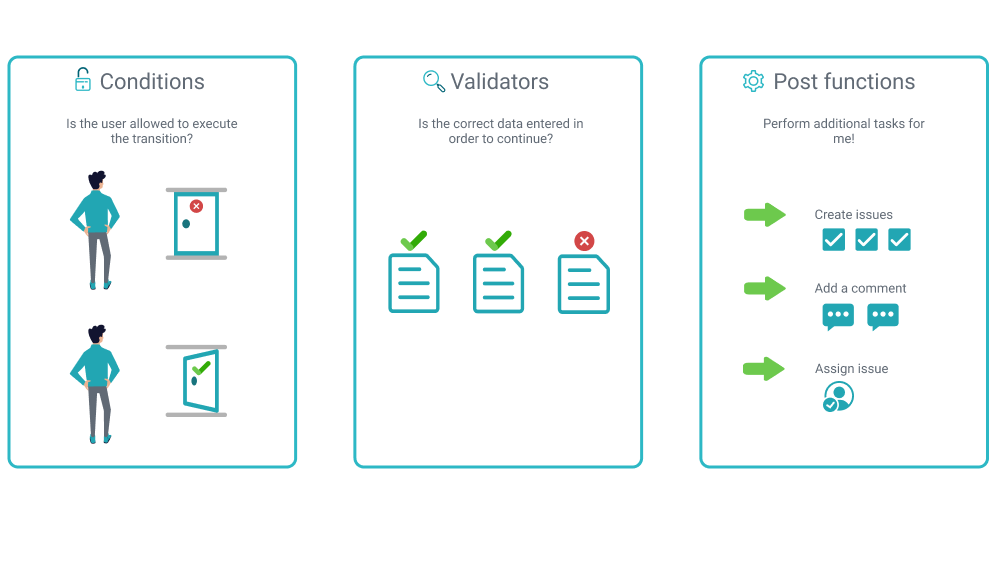The way tasks and processes are managed in Jira is through workflows. A workflow maps out the statuses an issue can go through and the available transitions between the statuses that together define your entire process.
You can edit the overall workflow used in a project, or modify the way particular issue types are handled in the workflow. But: At some point, you might end up stuck in the middle of nowhere because of feature limitations.
At this point, Jira Workflow Toolbox for Jira comes in handy!
JWT for Jira enhances the way you configure workflows. It extends the native functionality by offering custom conditions, validators, and post functions.
Conditions are used to control the transitions available to a user. If a condition fails, the user will not see the transition button on the Jira issue view, and so will not be able to execute the transition.
JWT offers the following conditions:
- Compare two values condition
- Condition based on cascading select list value
- Condition based on JQL query
- Condition based on regular expression
- Condition on JWT project property
- Condition on linked issues
- Condition on sub-tasks
- Except assignee
- Except reporter
- Except users in a field
- Fields required
- Hide transition from user (bulk operation only)
- Hide transition from user (JWT function only)
- Logical condition
- Only users in a field
- User is not in project role
- Users are/aren't in project role (condition)
To get more familiar with conditions, we recommend to take a look at our use case library:
Condition use cases and examples
Validators are used to guarantee accuracy of existing issue data or data entered on a transition screen before a transition is performed.
JWT offers the following validators:
- Compare two values validator
- Fields required or changed
- Logical validator
- Users are/aren't in project role (validator)
- Validation based on JQL query
- Validation based on regular expression
- Validation of JWT project property
- Validation of linked issues
- Validation of sub-tasks
To get more familiar with validators, we recommend to take a look at our use case library:
Validator use cases and examples
Post functions are used to perform additional processing and help to automate tasks after a transition is performed.
JWT offers the following post functions:
- Add comment
- Add or disable option in (multi-) select list, radio button, or checkbox field
- Add or disable option in cascading select list field
- Add or remove watchers
- Assign to project role
- Copy cascading select list value
- Copy excerpted value
- Copy field values from linked issues or subtasks
- Copy field values from multiple issues
- Copy JWT project property
- Copy JWT user property
- Create issue
- Create issue link
- Delete issue link
- Execute remote action
- Format field value
- Log work
- Move issue
- Regular expression renderer
- Send email
- Set or create JWT project property
- Set or create JWT user property
- Transition issue
- Update field based on rules
- Update linked issue or sub-task
- Update or copy field values
To get more familiar with post functions, we recommend to take a look at our use case library:
Post function use cases and examples
If you still have questions, feel free to refer to our support team.
